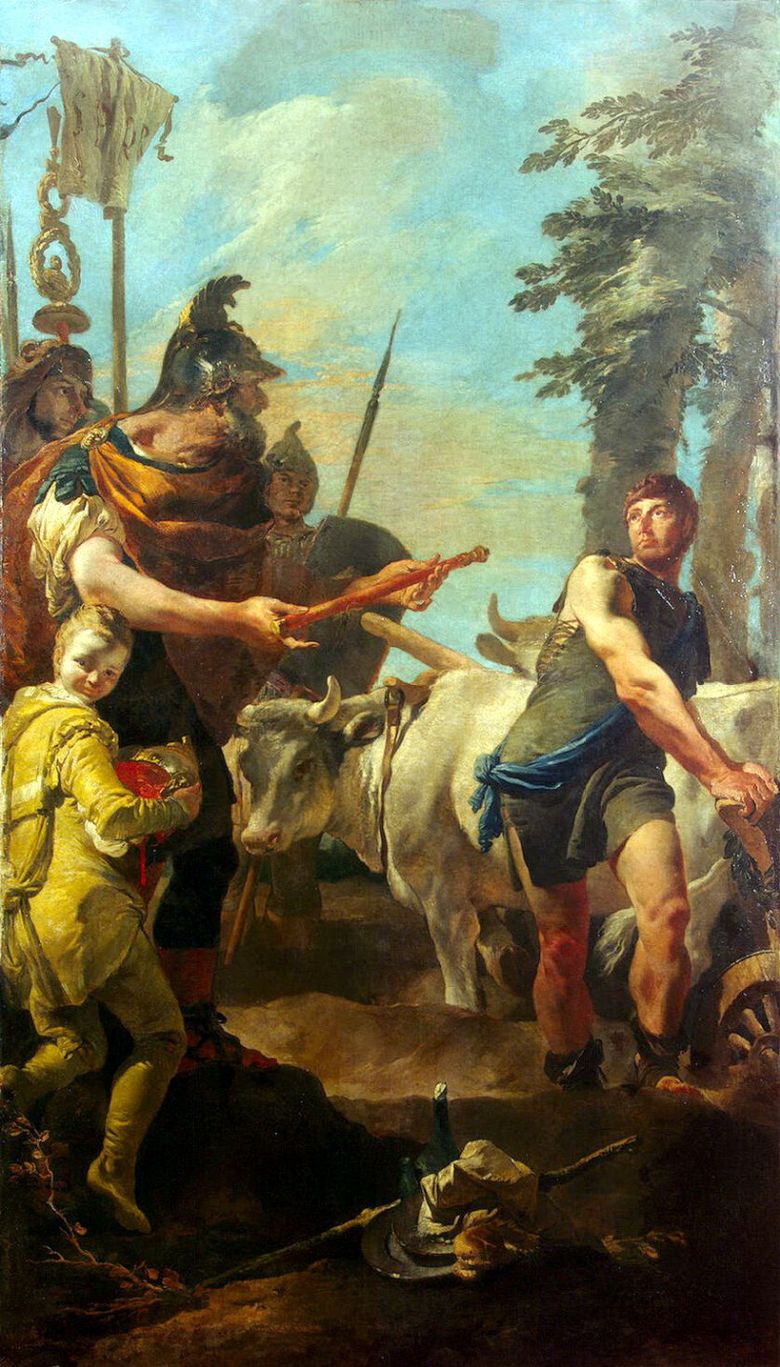
Roman commander Lucius Quintius Cincinnatus was distinguished by the simplicity and modesty of life, than earned the respect of his compatriots. After retiring from the business, he worked with his own hands on the small piece of land that belonged to him. When the mountain tribes attacked Rome, the Senate decided to appoint a dictator and sent envoys to Cincinnatus with the request to lead the army. At this time, Cincinnatus worked in the field.
After hearing the messengers, he took command, and when the Romans defeated the enemy, he returned to his former way of life. The inscription executed at the top of the picture says: “It was in the midst of sowing, when the lictor found the patrician at work, leaning on the plow.”
In the picture of Tiepolo, the envoys of the Senate extend Cincinnatus’s baton to the commander. The canvas included in a series of ten paintings on the subjects of early Roman history for the Palazzo Dolphin in Venice.
 Cincinnatus appel au pouvoir par le dictateur – Giovanni Battista Tiepolo
Cincinnatus appel au pouvoir par le dictateur – Giovanni Battista Tiepolo Llamando a Cincinnatus al poder de un dictador – Giovanni Battista Tiepolo
Llamando a Cincinnatus al poder de un dictador – Giovanni Battista Tiepolo Quintus Fabius Maximus in the Senate of Carthage by Giovanni Battista Tiepolo
Quintus Fabius Maximus in the Senate of Carthage by Giovanni Battista Tiepolo Coriolanum under the walls of Rome by Giovanni Battista Tiepolo
Coriolanum under the walls of Rome by Giovanni Battista Tiepolo The Feast of Cleopatra by Giovanni Battista Tiepolo
The Feast of Cleopatra by Giovanni Battista Tiepolo The martyrdom of St. Agatha by Giovanni Battista Tiepolo
The martyrdom of St. Agatha by Giovanni Battista Tiepolo Triumph Maria by Giovanni Battista Tiepolo
Triumph Maria by Giovanni Battista Tiepolo Triumph of Flora by Giovanni Battista Tiepolo
Triumph of Flora by Giovanni Battista Tiepolo